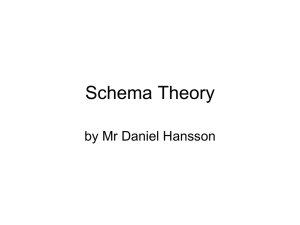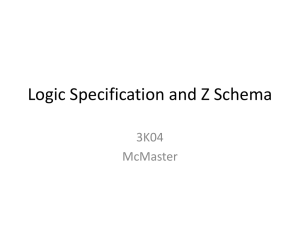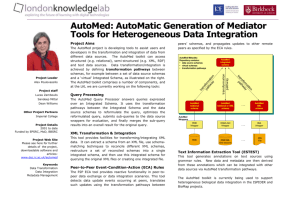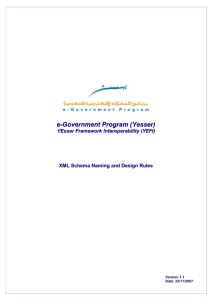Abstract - JP InfoTech
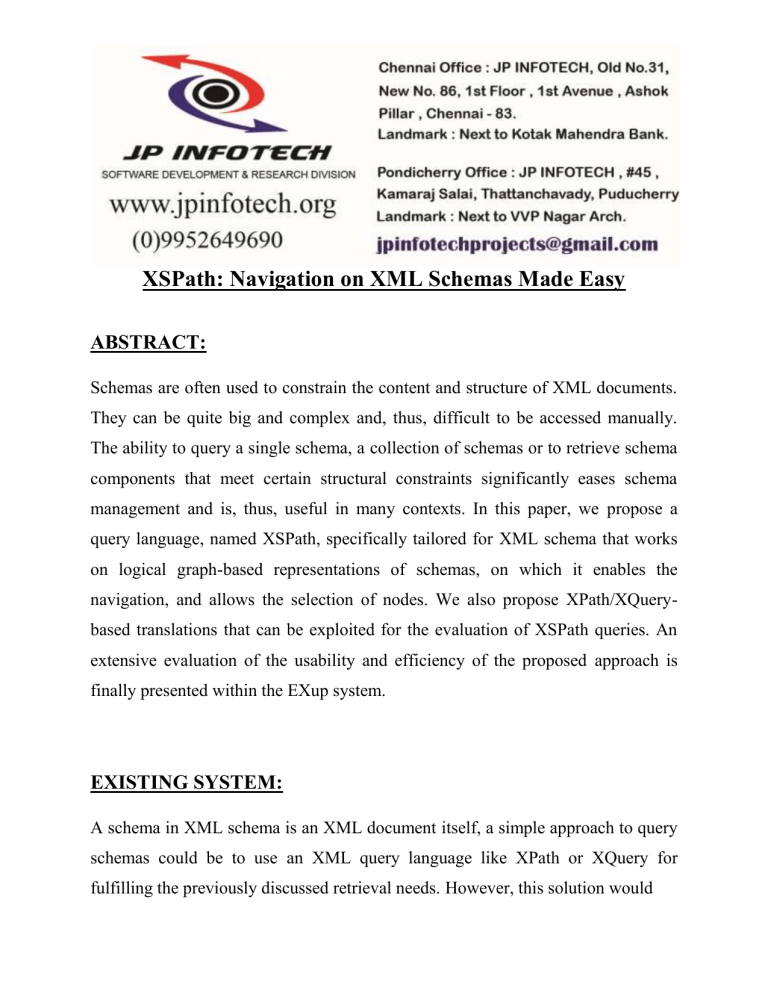
XSPath: Navigation on XML Schemas Made Easy
ABSTRACT:
Schemas are often used to constrain the content and structure of XML documents.
They can be quite big and complex and, thus, difficult to be accessed manually.
The ability to query a single schema, a collection of schemas or to retrieve schema components that meet certain structural constraints significantly eases schema management and is, thus, useful in many contexts. In this paper, we propose a query language, named XSPath, specifically tailored for XML schema that works on logical graph-based representations of schemas, on which it enables the navigation, and allows the selection of nodes. We also propose XPath/XQuerybased translations that can be exploited for the evaluation of XSPath queries. An extensive evaluation of the usability and efficiency of the proposed approach is finally presented within the EXup system.
EXISTING SYSTEM:
A schema in XML schema is an XML document itself, a simple approach to query schemas could be to use an XML query language like XPath or XQuery for fulfilling the previously discussed retrieval needs. However, this solution would
result in the specification of complex expressions that do not reflect the user intuitions in query formulation. Suppose, for instance, that we wish to denote the global library element in the schema. The XPath expression /schema/element
[@name=“library”] could be specified to retrieve the library element. This expression is verbose and a simpler expression like /library would be preferable. A simple extension of this query like: “find the book element declaration within library” would make the XPath specification much more complicated, while an expression like/library/book would be much more intuitive. Moreover, the occurrence of references to element declarations and the possibility to define the type of an element as global require specifying expressions over internal links.
Navigation of such links, however, is awkward in XPath.
DISADVANTAGES OF EXISTING SYSTEM:
Specifically, a graphical exploration tool is not adequate to query schema collections, representing for instance related schemas or different versions of the same schema, nor for all the situations where schema elements need to be retrieved
(based on some conditions) and to be subsequently target of some schema manipulation operations.
PROPOSED SYSTEM:
In this paper we propose a query language, named XSPath, specifically tailored for the retrieval of XML schema components. This language offers the ability of expressing retrieval needs on a logical representation of schemas, leaving aside the verbose XML schema syntax, thus greatly simplifying retrieval tasks, offering at the same time all the power and flexibility of a query language over graphical inspection tools. A key feature of the proposed language is that the expressions are specified on a two-level graph-based abstraction of schemas. These abstract representations make the specification of the expressions easier and leave to the language interpreter the burden of solving the gap between the logical (graphbased) and physical (textual) representations of schemas. The language captures a wide spectrum of retrieval needs in an XML schema that include: navigation on the nesting structure of element declarations, navigation on the type hierarchy generated by type restriction and extension, expression of conditions on cardinality, uniqueness and key constraints, types of element content and annotations.
The paper also proposes approaches for the translation of XSPath expressions in XPath/XQuery expressions to be evaluated on the textual representations of the target schemas. The choice of implementing XSPath via translation is mainly due to the possibility of relying on XPath/ XQuery engines
rather than developing a new engine specifically tailored for the evaluation of
XSPath expressions.
ADVANTAGES OF PROPOSED SYSTEM:
While the two different usage modalities of the language (on a given schema, on an arbitrary and unconstrained schema collection) have limited impact on its syntax and semantics, the impact on the translation process is high. Indeed, a schemadependent translation produces an XPath expression that is only guaranteed to obtain the correct result when evaluated exactly on the same schema on which it has been translated.
By contrast, with a schema-independent translation, an XQuery expression is obtained guaranteed to produce the correct result when evaluated on an arbitrary schema. However, a naïve translation often produces, in this second case, significantly longer expressions. Thus, specific static type analysis techniques have been defined to reduce the size of the resulting expression by taking advantage, in the translation of each step, of information that we can extract from all the steps in the expression.
SYSTEM ARCHITECTURE:
SYSTEM REQUIREMENTS:
HARDWARE REQUIREMENTS:
System
Hard Disk
Floppy Drive
Monitor
Mouse
Ram
: Pentium IV 2.4 GHz.
: 40 GB.
: 1.44 Mb.
: 15 VGA Colour.
: Logitech.
: 512 Mb.
SOFTWARE REQUIREMENTS:
Operating system : Windows XP/7.
Coding Language : JAVA
IDE : Eclipse Kepler
REFERENCE:
Federico Cavalieri, Member, IEEE, Giovanna Guerrini, Member, IEEE, and Marco
Mesiti, Member, IEEE-“XSPath: Navigation on XML Schemas Made Easy”IEEE
TRANSACTIONS ON KNOWLEDGE AND DATA ENGINEERING, VOL. 26,
NO. 2, FEBRUARY 2014.


